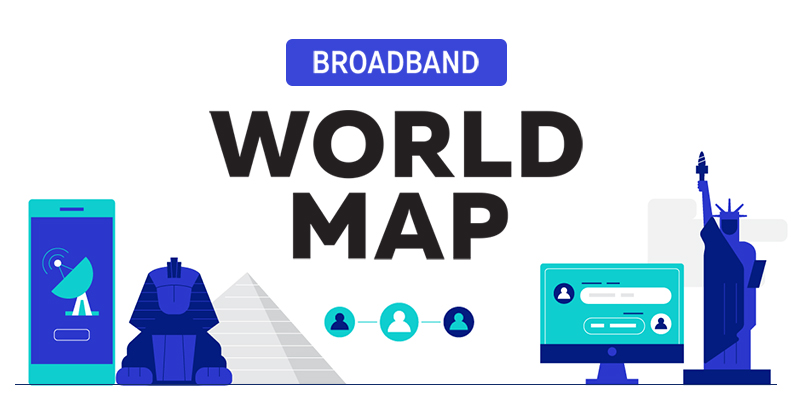Is broadband internet an essential, like water and electricity?
The case for treating the internet as a government-regulated utility
was already pretty strong before 2020 hit. Suddenly, people all around the world were told to earn their living from home. A wealth of daily activities – from grocery shopping to meeting friends to health consultations – was shifted online, with fines or arrests for anyone who broke the rules.
The internet is a literal lifeline for many. But just like clean water and nutritious food, affordable broadband access depends on where you are and who you are. Cheap internet is one thing, but broadband needs to be affordable. ‘Cheap’ may not be enough to get you online if your wage is disproportionately low.
NetCredit used World Bank data to figure out the average monthly wage in nearly every country in the world. Next, we used Cable.co.uk’s worldwide broadband price research to balance these figures against the cost of a fixed-line broadband package in each location.
This revealed how much of an average salary in each country you would need to spend in order to get online.
This data set also provided us with the average broadband speed in each location. To ensure we were comparing everything on a like-for-like basis, we calculated the cost per Mbps (megabits per second) and used this to find out how much a 10Mbps fixed-line broadband package would cost in each country.
Key Findings
- Yemen has the least affordable broadband deal in the world. A subscription costs US$2,466.67, which is 2792.56% of the average $88.33 paycheck.
- Monaco has the most affordable broadband. A deal costs $34.49, or 0.68% of the average $5,043.69 monthly wage.
- Romania has the world’s cheapest internet when measured against speed: it costs $0.13 per Mbps.
- Yemen again comes out on bottom for value. The price works out at $3,768.65 per Mbps.
Where in the World Do You Get More Broadband for Your Salary?
Wages differ vastly around the world. We figured out the percentage of the average monthly wage you’d need to spend to get a 10Mbps broadband package in every country and created this world map of broadband deals. Scroll on to see more detail, one continent at a time.
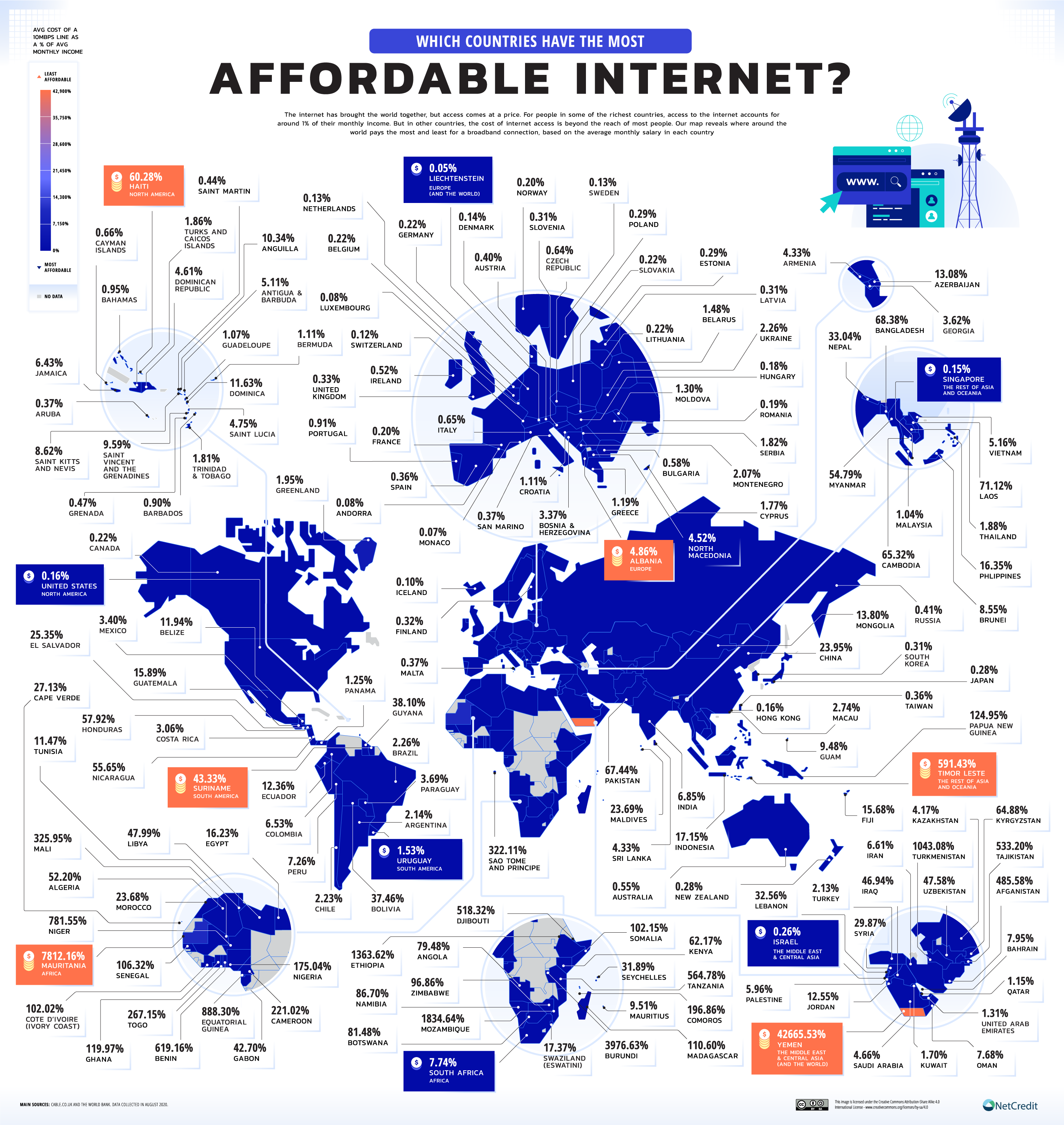
The civil war in Yemen has made it impossible to build reliable broadband infrastructure. Even to deliver basic internet to ordinary citizens is a challenge. Added to this is Yemen’s extreme poverty – in 2019, the UN stated that Yemen was fast on the way to becoming the world’s poorest country. It is no surprise that a broadband deal costs nearly 30 times the average monthly income.
Europe is home to some of the most affordable internet in the world. You wouldn’t blink while inking a broadband deal in Liechtenstein, where the average wage is the second highest in the world, ($5,768.95/month) and a 10Mbps internet package would cost only $2.91.
North America
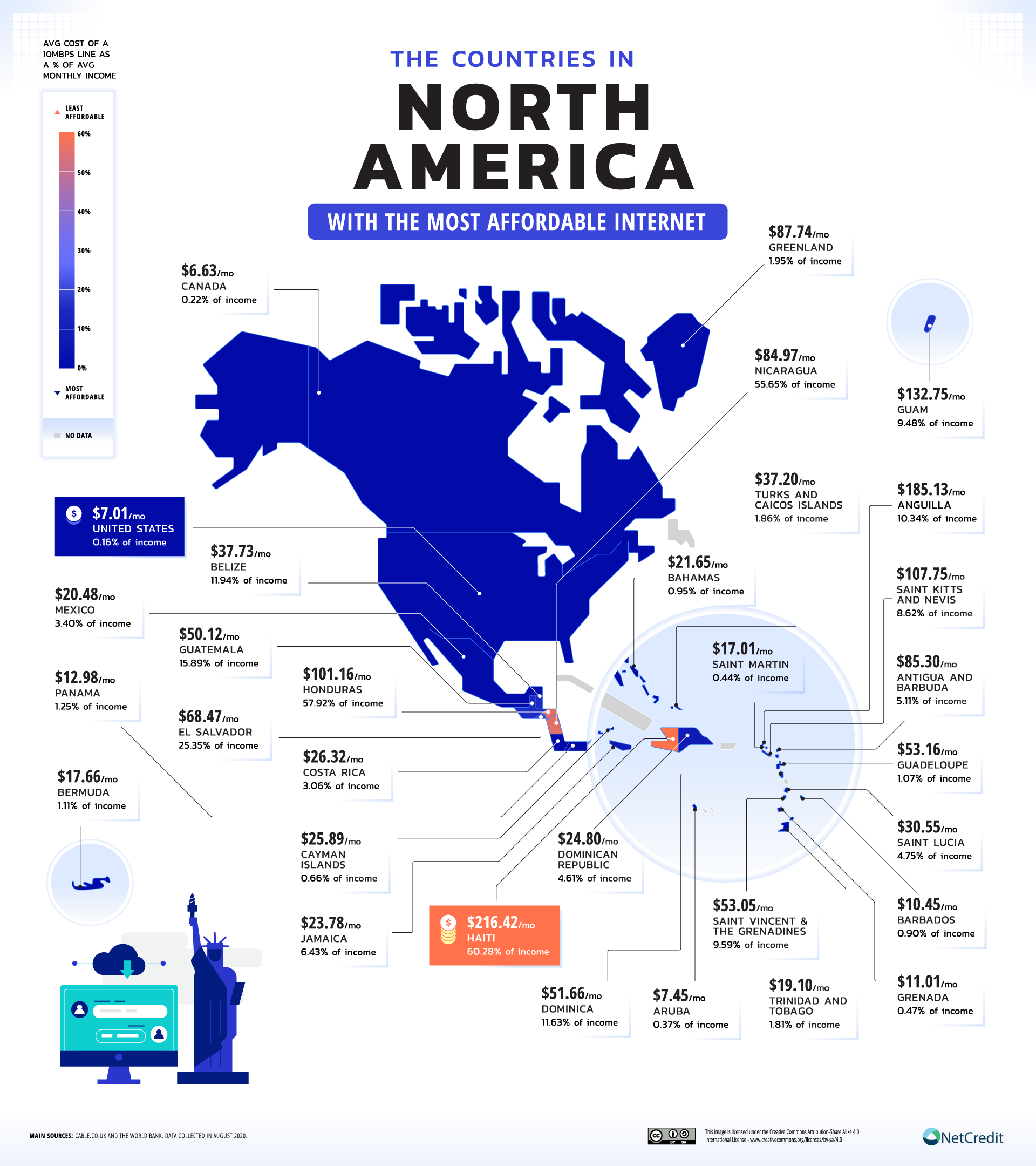
The United States has the world’s 19th largest GDP per capita. The average monthly wage is just over $4k, while a 10Mbps monthly broadband package would cost you $7.01. This means you’d need to spend just 0.16% of your paycheck on the internet – making it the most affordable broadband in North America.
Canada and the Aruba place second and third for a good deal. Broadband costs 0.22% and 0.37% of the average monthly wage, respectively. But you’d need to spend more than half of your income to get a line in Haiti, Honduras or Nicaragua, where paychecks are in the low 3-figures and a 10Mbps internet deal would cost an eye-watering $216.42, $101.16 and $84.97 respectively.
South America
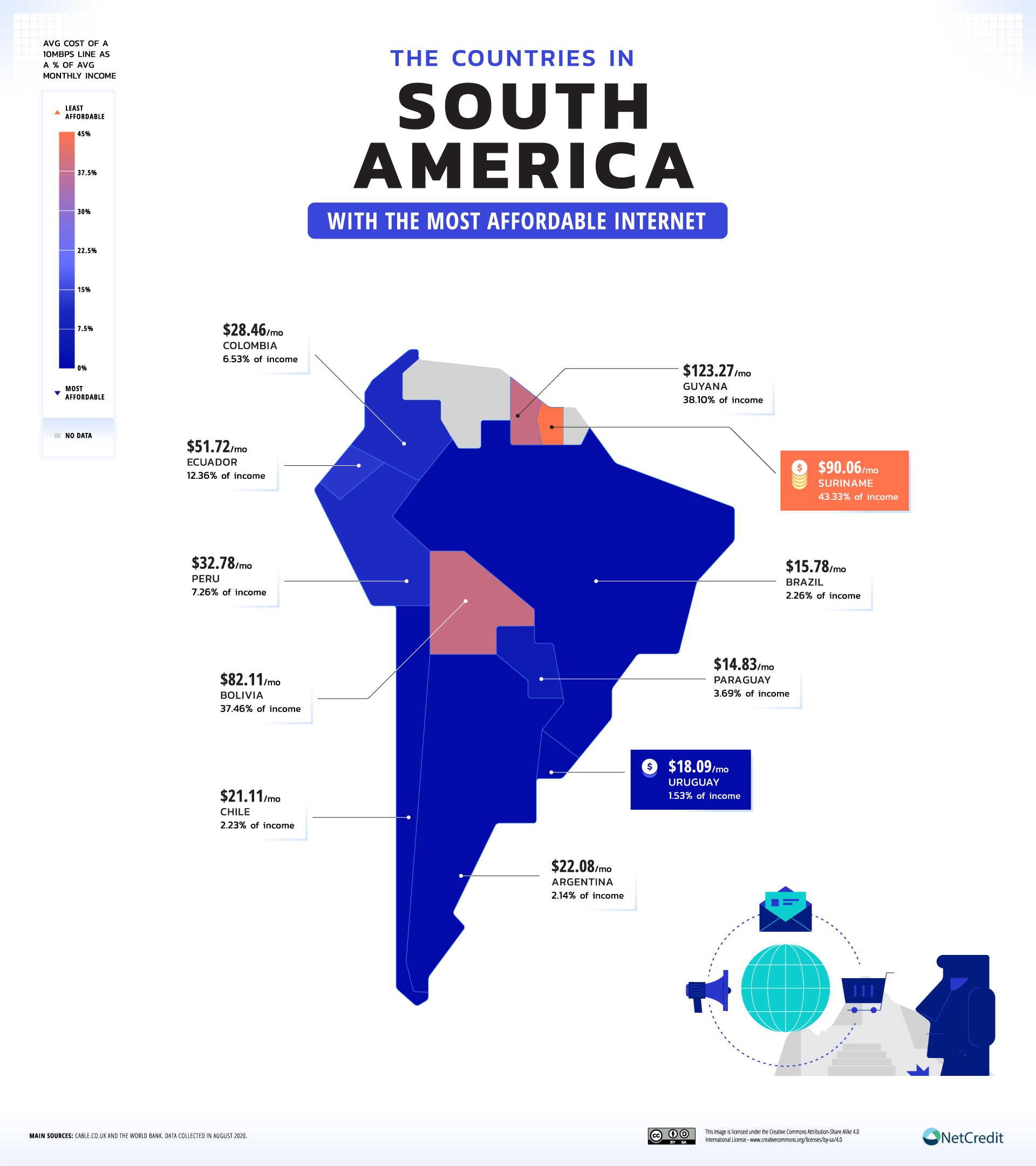
The South American continent shows the full spectrum of broadband affordability. The internet is least affordable in Suriname due to the state monopoly on fixed-line and broadband services. The average bill is $90.06 for a 10Mbps package, or 43% of the average monthly wage.
Uruguay gets the best deal with a 10Mbps package costing $18.09 or 1.53% of the monthly average salary. This is closely followed by Argentina whose ADSL infrastructure has been in place for over thirty years. Here a 10Mbps internet bill would cost $22.08 or 2.14% of the average $1,030.49 paycheck.
Europe
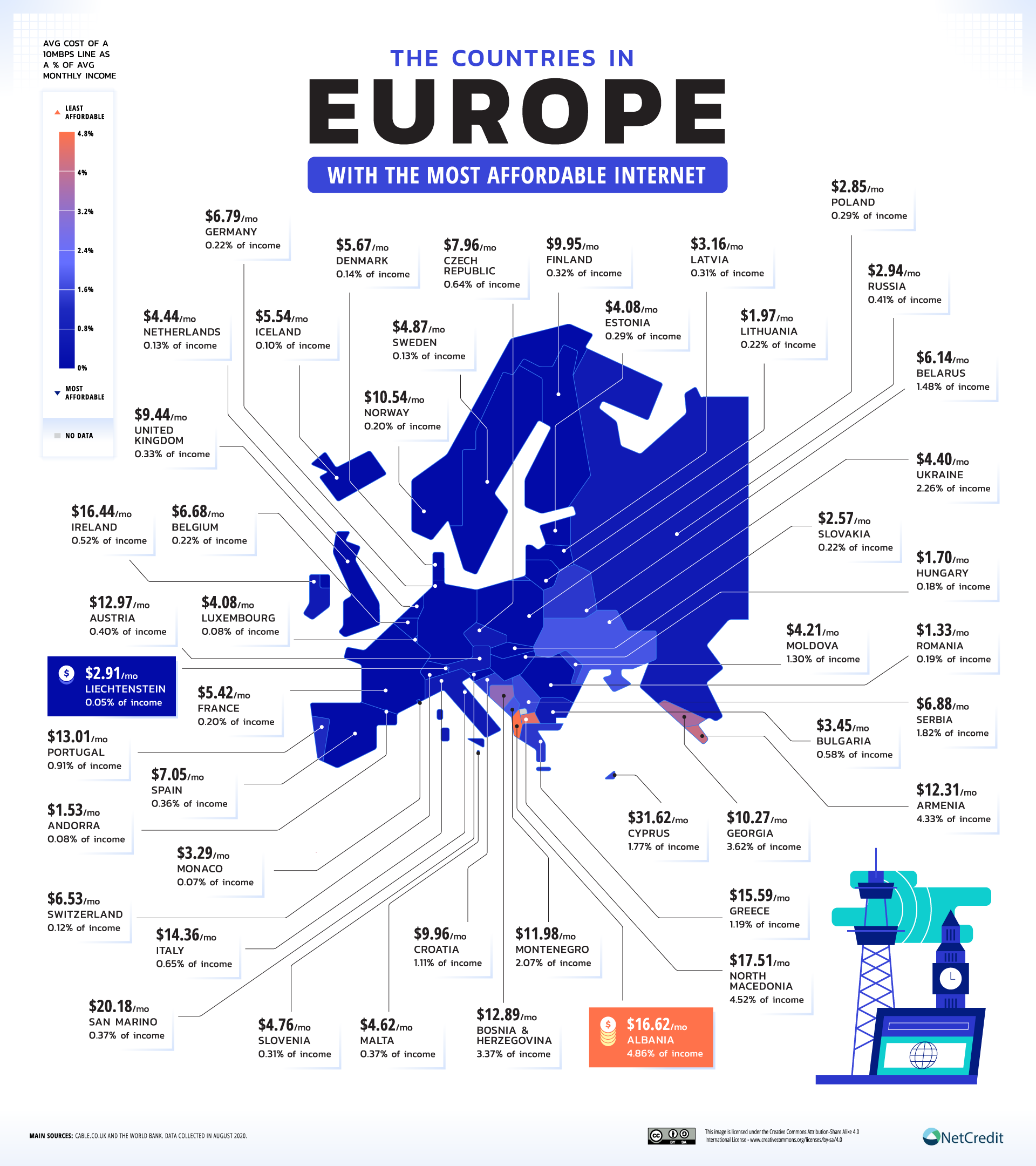
The EU has pledged “access to connectivity offering at least 100Mbps for all European households” by 2025. A combination of regulation and competitive markets makes the continent a relatively affordable place to get online.
The majority of countries pay less than 1% of their average wage to get broadband. Super-wealthy states such as Liechtenstein, Monaco and Luxembourg form the top three. Here wages all exceed $5,000 a month and a 10Mbps package would only cost you $2.91, $3.29 and $4.08 a month respectively.
Non-EU states, particularly in the Balkans, get the worst deal. Albania is at the foot of the table since a 10Mbps package would cost $16.62, which is 4.86% of the average $342.10 paycheck.
Middle East and Central Asia
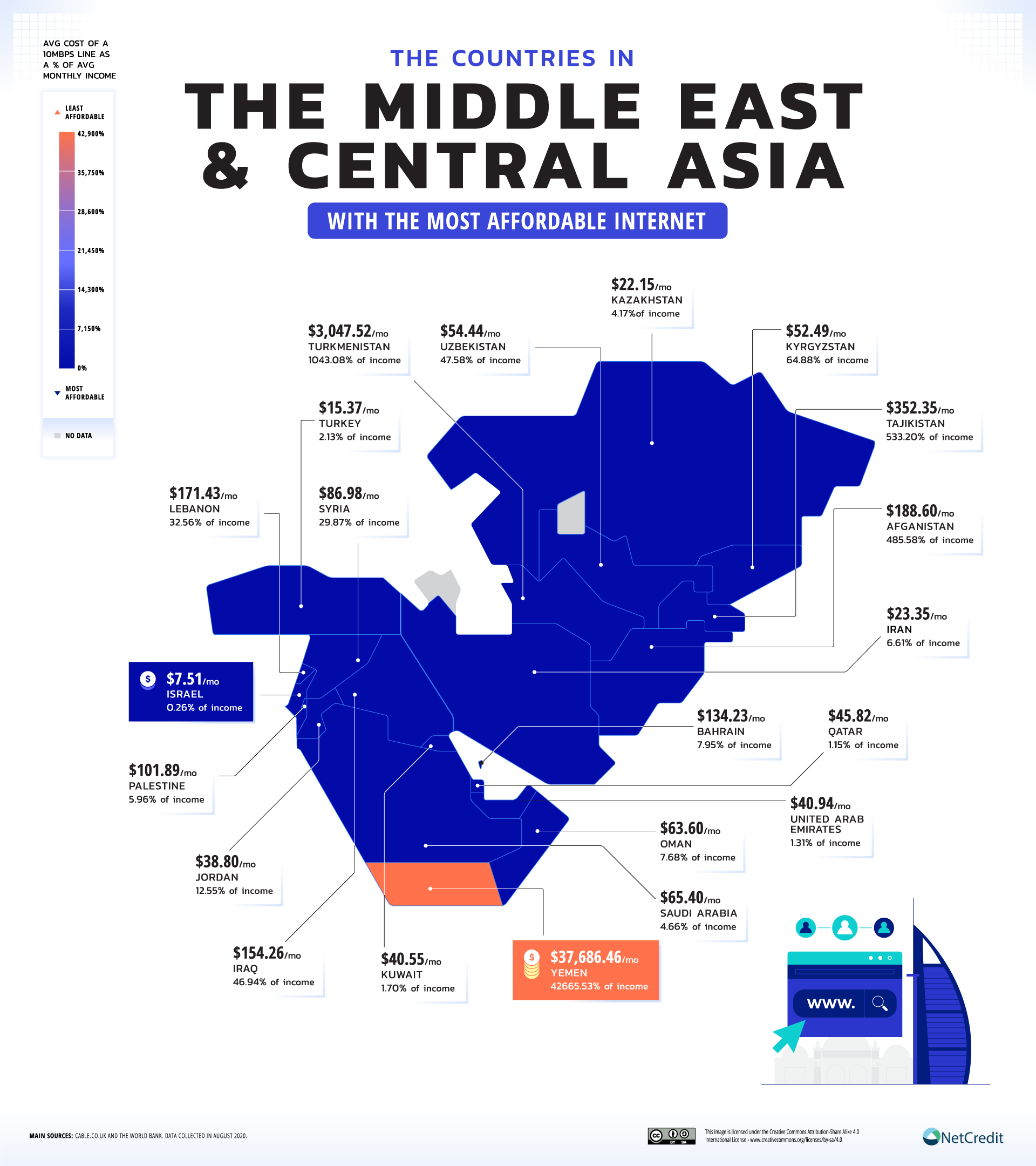
Broadband tends to come with a heavy price tag in the Middle East, where the rollout of the necessary infrastructure was quite late. Still, Israelis get affordable broadband since a 10Mbps package would only cost $7.51, which is just 0.26% of the average $2,912.46 wage.
More than half the countries in this region need to pay more than 5% of their income to get a broadband connection. However, Tajikistan, Afghanistan, Turkmenistan and Yemen each would have to pay more than four times their average paycheck to get a 10Mbps line. With Yemeni people particularly hard hit, having to pay 400 times their average monthly income.
Rest of Asia & Oceania
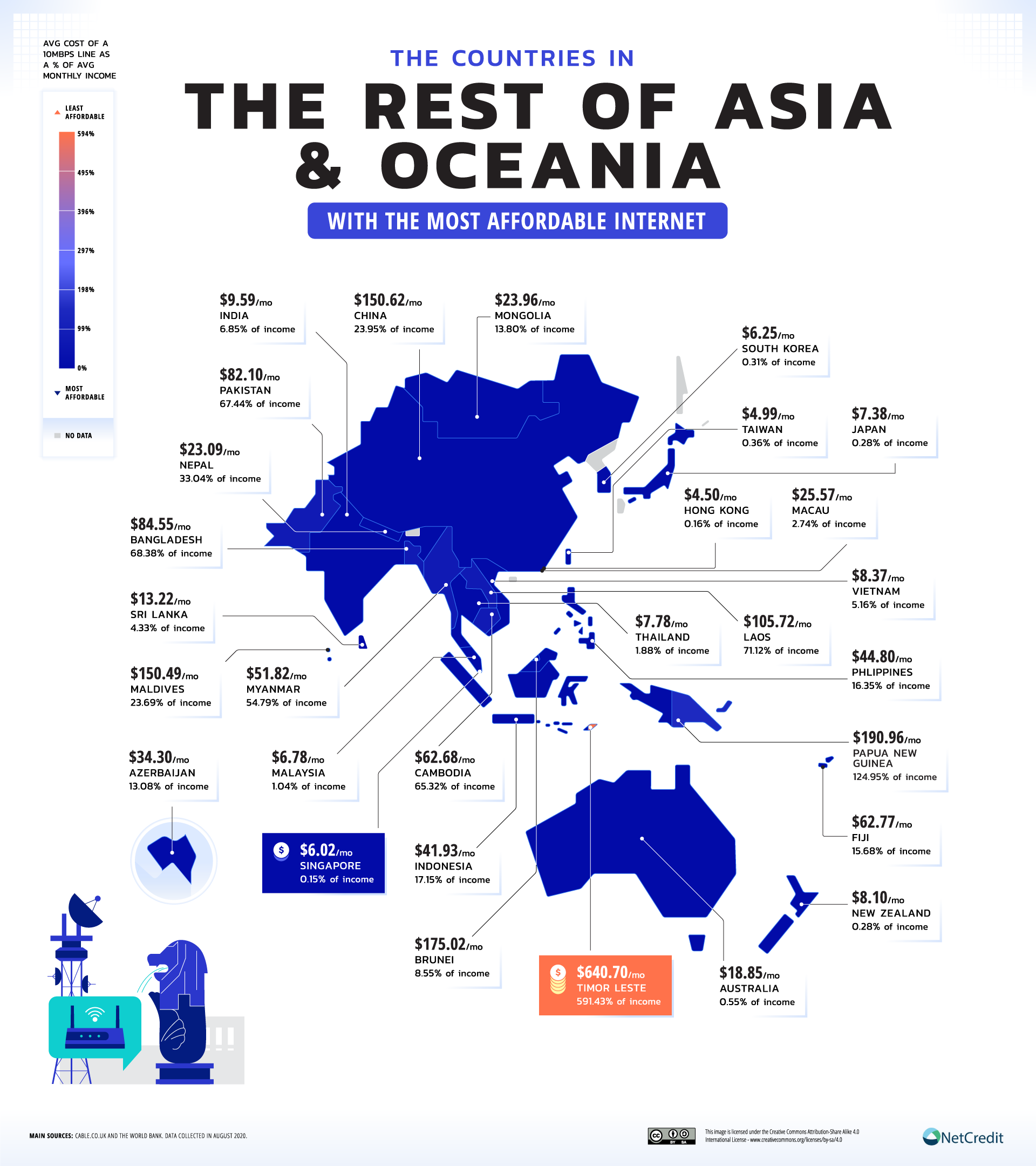
Broadband affordability varies dramatically across this region. Economic powers such as Singapore, Hong Kong, New Zealand and Japan lead the way with internet bills for a 10Mbps line equating to between 0.15% and 0.28% of the average paycheck. Singapore is the standout among these, with an average wage of almost $4k against a cheap average broadband bill of $6.02.
The table is footed by developing countries with wages of around $150/month or less and broadband deals in the hundreds. Timor Leste is hit the hardest, their average wage of $108.33 would not even cover a fifth of the cost of a 10Mbps broadband package. In Timor Leste if a 10Mbps were available it would cost $640.70 or 591.43% the average monthly income.
Africa
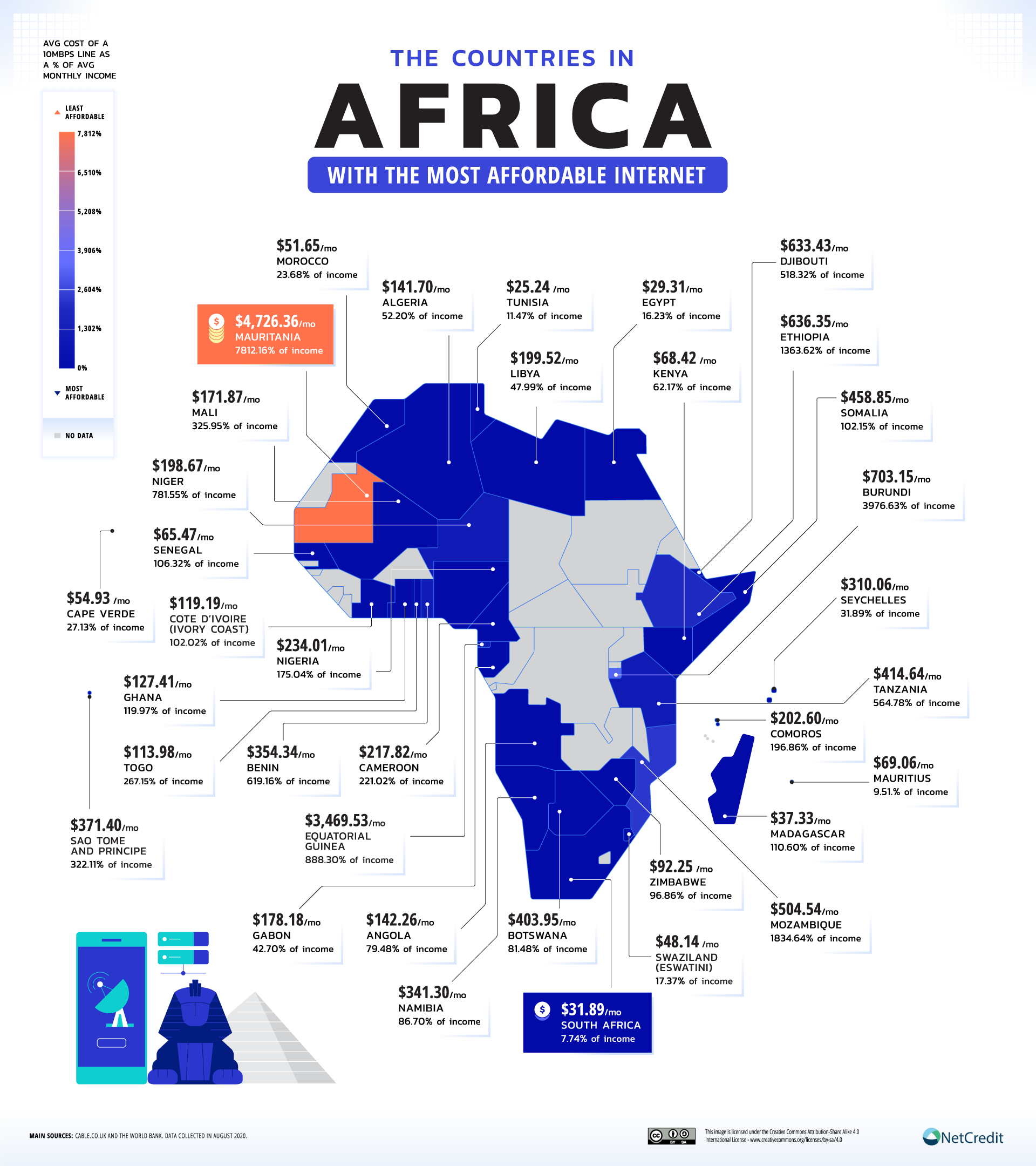
Broadband is non-existent in much of Africa, and the countries for which figures were available mostly pay upwards of 10% of the average wage to get a broadband connection. In South Africa you’d need to pay $7 out of every $100 earned to get a 10Mbps broadband connection, yet this is the most affordable broadband spot on the continent.
Several countries have broadband deals that cost hundreds of dollars. In Mauritania, the broadband bill for a 10Mbps line would be an incredible $4,726.36. This dwarfs the average monthly paycheck of $60.50 at a rate of 7812.16% This makes Mauritania the second least affordable broadband market in the world.
Which Countries Get the Best Value Broadband Speeds Compared to Cost?
For gamers, movie-lovers and some professionals, just getting online isn’t enough: you need speed. We compared average high speed internet prices and download speeds to figure out how much it costs to get 10Mbps in every country, and what percentage of the average local paycheck that requires.
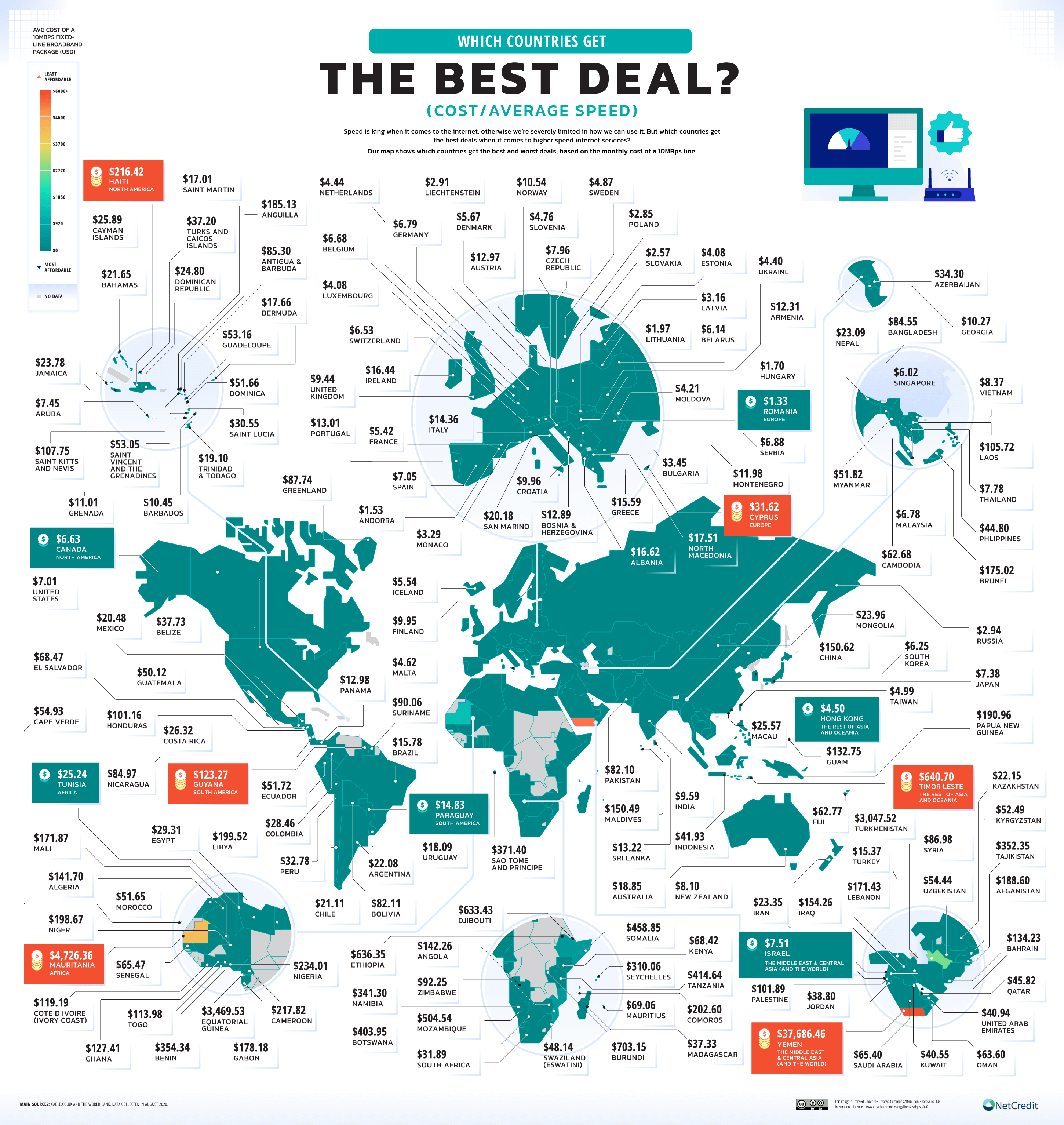
Mid-high wages and fast internet as standard means you get a lot of bang for your buck in Europe. For example, in Hungary average wages are around $1k/month. So, a 10Mbps line would cost just $1,70 equivalent to 0.18% of the average wage.
Broadband speed is lagging behind in much of Africa and Asia. The worst 10 Mbps deals cost upwards of 1000% of the monthly wage in parts of Africa, thanks to two-figure wages and speeds that barely reach 4Mbps. Even in Seychelles, where wages are comparable to Hungary’s, you’d need to spend 31.89% of your income to get 10Mbps broadband – because the mean download speed is just 3.96.
The geopolitics of communication
Broadband speeds and costs vary greatly around the world and even within continents. Some governments struggle to provide the infrastructure and regulation to provide good internet fairly. In other places, low wages and poor conditions mean fast, affordable broadband is still a pipe dream. Can we have a fair and equal world while the distribution of this vital communication tool depends on so many complex variables?
See the full data behind the map by using the table below:
METHODOLOGY & SOURCES
All prices were converted to USD using the exchange rate available through xe.com‘s Currency Converter.
How did we discover which countries pay the most and least for internet?
First we collected average salary data from the World Bank’s “Adjusted net national income per capita” data series, which indicates the average income of a resident in every country. We divided these figures by 12 to estimate an average monthly income. Next, we used data from cable.co.uk to find the price for fixed-line broadband in every county and divided this by the average salary.
How did we find out which countries get the best deal?
We used cable.co.uk to find the price for fixed-line broadband and the average internet speed in each country. The world’s average internet speed is 23.57Mbps. To make the data as accessible as possible, we have calculated the average cost in USD per Mbps in each country by dividing the average fixed-line broadband package price by the mean internet speed. For our visualizations, we have used this figure to show the cost of an average 10Mbps line in each country, as in most countries, a 10Mbps line is available as a product.
All of the data for this project was collected in August 2020. For the full research, visit bit.ly/AffordableInternetData


